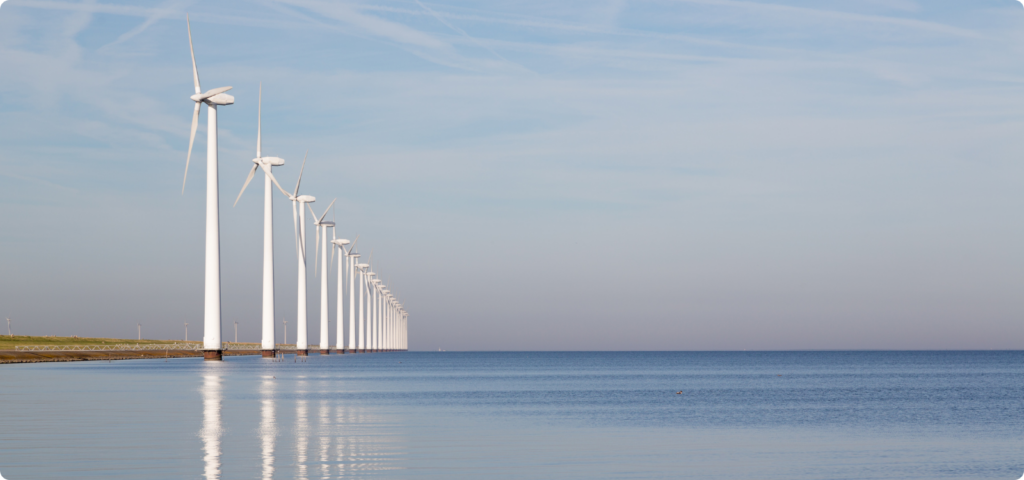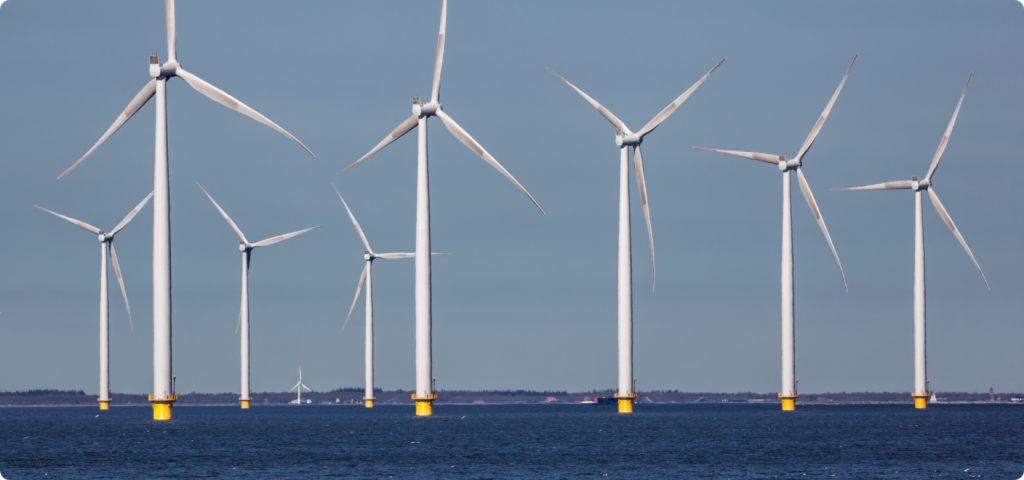The Dutch North Sea is central to the Netherlands’ renewable energy ambitions, with plans to generate 21 GW of offshore wind energy by 2030, rising to 50 GW by 2040, and 70 GW by 2050. As one of Europe’s leading regions in the transition to green energy, it must balance its ambitious climate goals with the need to protect marine biodiversity and sustain vital food sources. Through innovative governance, stakeholder collaboration, and strategic planning, the Netherlands is setting an example for sustainable offshore wind development.

Balancing Wind Energy and Marine Health
Under the North Sea Programme 2022–2027, the Netherlands employs Marine Spatial Planning (MSP) to designate wind farm zones while minimizing overlaps with ecologically sensitive areas. This strategy integrates nature restoration measures, such as habitat restoration for species affected by fishing, ensuring that marine biodiversity is enhanced alongside renewable energy development.
To guide responsible expansion, the Dutch government uses Strategic Environmental Assessments (SEAs) and Environmental Impact Assessments (EIAs) to evaluate ecological impacts, supported by the Framework for Assessing Ecological and Cumulative Effects (KEC). These assessments, complemented by research programs like Wind op Zee Ecologisch Programma (Wozep), drive innovation in biodiversity mitigation and marine restoration.
A defining feature of this approach is stakeholder collaboration. Platforms like the North Sea Consultations and the Community of Practice North Sea bring together government agencies, environmental organizations, and industry leaders to align objectives. This inclusive governance ensures that offshore wind development supports both sustainable energy production and marine ecosystem health.
CrossGov’s Examination of Dutch Governance
The Dutch North Sea is governed by a complex array of policies and directives, including the Marine Spatial Planning Directive (MSPD), Marine Strategy Framework Directive (MSFD), Common Fisheries Policy (CFP), REPowerEU, and others. While these frameworks collectively aim to balance climate and environmental objectives under the European Green Deal (EGD), their overlapping mandates often create challenges.
This case study investigates how national legislative and regulatory instruments for planning and licensing offshore wind farms integrate these competing goals. By examining areas of alignment and conflict, it identifies ways to address uncertainties, streamline licensing processes, support fisheries, and protect marine ecosystems.
The study focuses on both the planning and licensing phases of offshore wind development, offering lessons to ensure that the Netherlands meets its long-term climate and environmental targets through more coherent implementation of EGD




